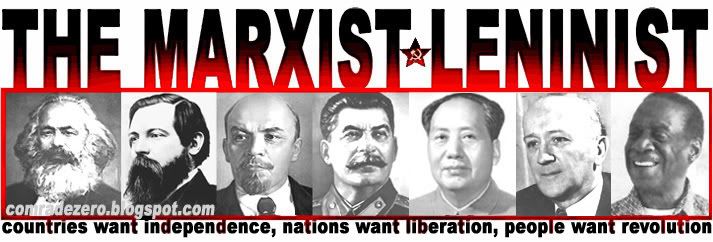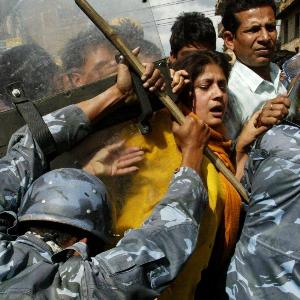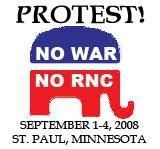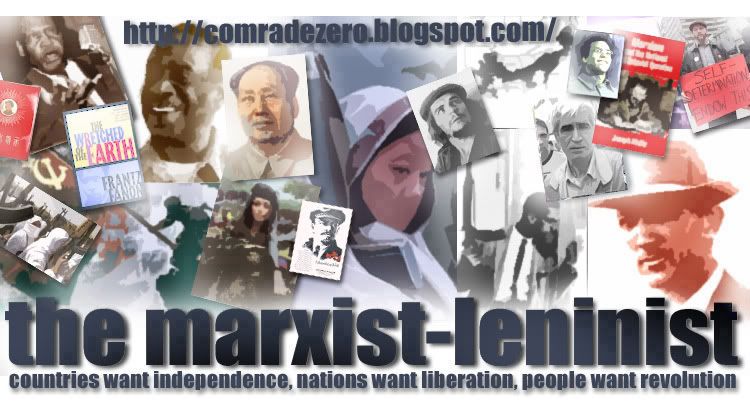People's Army marches through provincial city centre
 27 March 2006. A World To Win News Service.
27 March 2006. A World To Win News Service. The Nepal Maoist weekly Janadesh reports that Nepal's People's Liberation Army staged a march through the city centre of Gularia, the district headquarters of Bardiya in western Nepal 21 March. Gularia is a medium-sized city, by Nepali standards, situated around 50 kilometres west of Nepalgunj, the Nepali city that serves as India's business gateway to western Nepal. Gularia itself is less than five kilometres from the Indo-Nepal boarder. The Indian state has already set up its armed forces across the border areas to control the Maoist revolutionaries.
This is the first time that the People's Liberation Army (PLA) has carried out this kind of action, a full-force, deliberately staged march through the city by a PLA "Urban Team" beginning at 10:30 in the morning, local time, and not the kind of brief and incidental crossing of an urban area that has sporadically occurred before in the course of a battle with the enemy ever since the People's War was initiated in 1996. It caused widespread surprise in Nepal, although the news was blacked out by the reactionary state propaganda machinery and other bourgeois media.
 The 21 March Janadesh quoted a PLA source who called it a dress rehearsal for armed insurrection to capture the city centres. The spokesperson also said that it was a last warning to the royal state. Janadesh reported that a great new enthusiasm erupted among the city dwellers after the PLA completed its passage through the city.
The 21 March Janadesh quoted a PLA source who called it a dress rehearsal for armed insurrection to capture the city centres. The spokesperson also said that it was a last warning to the royal state. Janadesh reported that a great new enthusiasm erupted among the city dwellers after the PLA completed its passage through the city.
There are army barracks and police centres in Gularia. The royal regime's security forces attempted to disrupt the march, resulting in the death of three policemen. After PLA soldiers detonated a land mine, the Royal Nepalese Army was confined within the barracks. The PLA march proceeded through town as per plan. Although an RNA helicopter attacked the march, there were no PLA casualties. It is not known yet whether the helicopter came from Nepalgunj or another regional or district headquarters.
In a separate action, the People's Revolutionary Government confiscated a vehicle of the old state centred in the Rolpa district headquarters. The Revolutionary Government, like the PLA, is led by the Communist Party of Nepal (Maoist).
In other news, King Gyanendra Shah has left Kathmandu, and has been living in Pokhara tightly encircled by his Royal Army. While he temporarily returned to the capital a few days ago to speak with a visiting Chinese representative, he arrived at the Royal Palace in a helicopter after the sky had been cleared of all aircraft for 22 minutes. This contrasted with his attempts to portray his situation as one of unconcern when almost four months ago, during the unilateral ceasefire implemented by the CPN (Maoist), Gyanendra had invited the media to cover him as he took a day-long walk in Lalitpur, in the capital Kathmandu. Gyanendra has been worried about Kathmandu residents since they pelted his hooligan son, Paras Shah, with stones in the Baneshwor district, halfway between the airport and the Royal Palace, as the son was going to welcome home Gyanendra from a month-long trip abroad.  10 April 2006. A World to Win News Service.
10 April 2006. A World to Win News Service. In Nepal, 6 April commemorates both the beginning of the 1980 upheaval against the feudal monarchy and the 1990 mass struggle that forced the monarchy to accept a parliamentary democracy until the current king dissolved parliament 14 months ago. On that date this year, the seven-party alliance of parliamentary forces opposed to the king called a four-day bandh, a national strike and shutdown, supported by the Communist Party of Nepal (Maoist), which suspended armed operations in and around the capital at their request. It is the vigorous expansion of the people's war led by the CPN(M) that has set the stage for the parliamentarians to move into the streets.
Despite a ban on demonstrations and a daytime curfew in Kathmandu and other cities, thousands of demonstrators built flaming barricades with tyres and threw rocks to fend off heavily armed police. Urban streets remained a battleground even after the four-day time period ended. At least four people were reported killed by security forces. At the same time, in four corners of the country, the Maoist-led People's Liberation Army attacked government military bases and other facilities. In a first for this war, during the course of one of those battles the revolutionary forces shot down a Royal Nepal Army helicopter.
Helicopters terrorize liberation struggles all over the world. The RNA has been using copters to drop bombs and as firing platforms against both PLA soldiers and ordinary people. In January this year, an aerial attack killed CPN(M) Central Committee member Comrade Sunil during a party meeting, in violation of the ceasefire agreement at that time. Recently another helicopter attack killed several people attending a Maoist-led mass meeting in Thokarpa (Sindhupalchok district), before the eyes of national and international journalists. The same MI-17 aircraft flew to Malwanga, the district headquarters of Saralahi, in eastern Nepal, on the morning of 6 April as PLA forces attacked a military base. PLA ground fire brought it down in flames, killing ten Royal Army officers. In a statement hailing this event, CPN(M) Chairman Prachanda said the copter had been shot down using "a combination of modern and home-made technology."

The PLA took over this district capital in the eastern Terai (plains) region of Nepal. All the government offices of the old state were destroyed and some of the officers including the security forces were taken into custody. Some 125 prisoners were released from the prison. Most of them were political prisoners.
Meanwhile, the tempo of the struggle accelerated in Kathmandu and other cities. On the first day of the bandh, despite preventive raids against the homes of opposition leaders and the previous arrest of opposition activists, demonstrators had taken over small cities surrounding the capital, such as Patan, Bhaktapur and Kirtipur. Some thousand people were arrested across the country that day. Demonstrators chanted that the king should leave the country immediately.
On the second day of demonstrations, the masses were able to rescue some of the parliamentary party leaders held in police custody. Police had arrested a leader of the Congress Party, but demonstrators in Patan snatched him away from them. Patan, Bhaktapur and Kirtipur remained under the control of the demonstrators. The regime carried out aerial attacks on crowds. One demonstrator was killed and several others also shot in the city of Pokhara.
During the third day of the general strike, PLA assaulted a Royal Army based in Kapilbastu district in the central Terai region. About a dozen army barracks were destroyed, along with fortifications and vehicles. Some two dozen Royal Army personnel killed, and a large quantity of

weapons seized. A statement by the CPN(M) regional bureau called this battle a rehearsal for seizing the capital and central state power.
On the fourth day, thousands of demonstrators defied a 7 am – 8pm curfew and continued to demonstrate. Most transportation ceased and businesses remained closed. The upheaval continued unabated on 10 April, even after the end of the four days for which the bandh had originally been called.
CPN(M) Chairman Prachanda issued a statement supporting this general strike. He explained that the seven parties had called it in accord with the second memo of understanding between the CPN(M) and the seven-party alliance. He particularly hailed the broad participation of the masses of people despite the medieval suppression the feudal autocratic regime had attempted to impose. He continued, "The Nepalese people of all classes, nationalities, regions and genders have risen up today to get free from the autocratic feudal monarchy. The entire country has come to demand the fulfilment of the desire for peace and democracy through election of a constituent assembly against the autocracy. At this decisive and sensitive historical moment, our party has been advancing and will advance, with a suitable adjustments and understandings with the political parties and civil society, deeply committed to the immediate historic necessity of establishing a democratic republic through the election of a constituent assembly. In this regard, our party strongly supports the decision of the seven parliamentarian parties to continue the general political strikes until the downfall of the autocratic monarchy and also announces its own programme."
This programme of struggle adopted by the CPN(M), adjusted to the general political strike of the parliamentarian parties, includes staging demonstrations defying curfews and bans; destroying idols, statues and other symbols of feudal kings and emperors; removing all signboards that say "His Majesty's Government"; promoting and supporting the campaign for the announcement of the people's republic of Nepal that is being carried out now at the local

level; mobilising the masses to refuse to pay taxes to the royal regime and taking action against tax brokers that help the feudal elements; and keeping all highways under control of the PLA.
Referring to attempts by the US and other powers to get the parliamentary parties to break away from the Maoists and compromise with the king, Comrade Prachanda declared, "The demise of the feudal autocratic monarchy and the establishment of the democratic republic are nearing. Our party again strongly appeals to all the pro-people forces and broad masses of people in and outside of the country to lead the struggle to success, and to remain alert against all kinds of pernicious conspiracies and compromises against the people at this last moment."
































